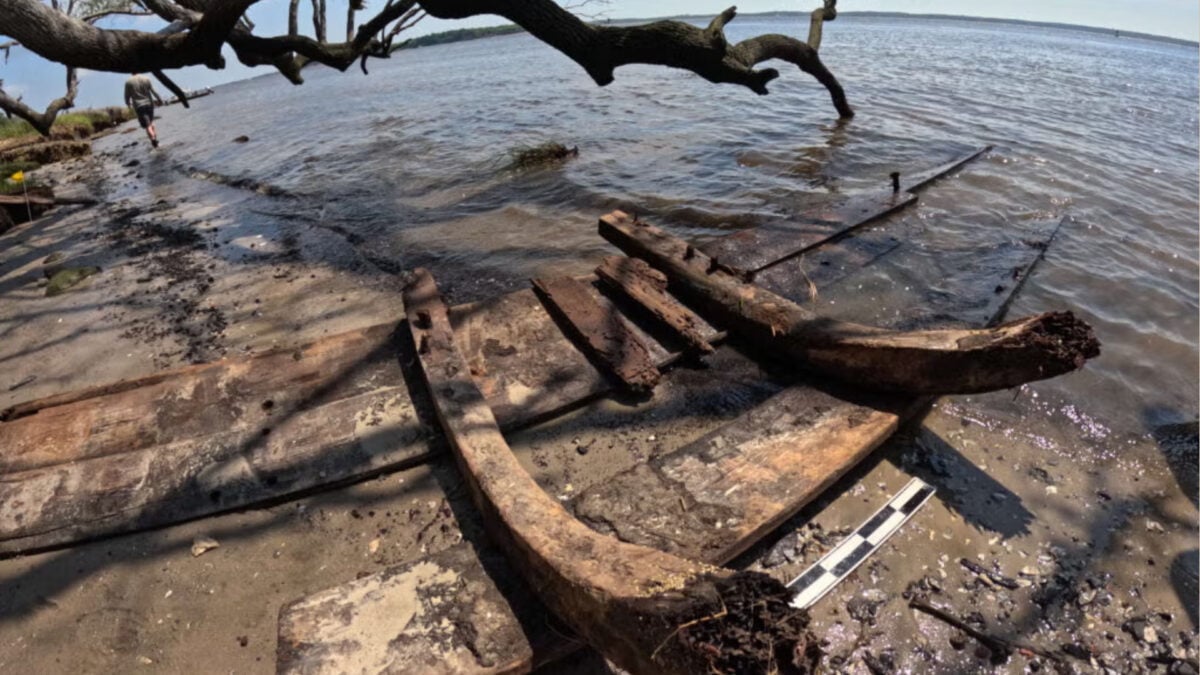Possible Spanish Shipwreck From the 1700s Emerges From North Carolina Marsh

Archaeologists in Brunswick County, North Carolina, have discovered four shipwrecks in just two months.
One could be La Fortuna, a Spanish ship destroyed in September 1748, during King George’s War. The researchers found the wrecks and a number of colonial waterfront features in May and June at the Brunswick Town/Fort Anderson State Historic Site (BTFA), the former location of a pre-Revolutionary port and later a Civil War Confederate fort. The exposed remains, previously hidden beneath a marsh, are now vulnerable to erosion.
“We are extremely excited about these important sites, as each one will help us to better understand the role of BTFA as one of the state’s earliest colonial port towns,” Jason Raupp, an archaeologist at East Carolina University who led the discovery team involved, said in a university statement.
Raupp and his colleagues found the shipwrecks along the BTFA shoreline. Samples from one of the wrecks revealed that the ship included timber from either Monterey cypresses or Mexican cypresses, meaning wood from either Southern California or Central America. According to the researchers, this suggests that shipbuilders in the 18th century used materials from Spanish colonies in the Caribbean.
Consequently, the archaeologists believe the shipwreck could be that of La Fortuna, because it is the sole historically reported Spanish shipwreck in the region. What’s more, they found the wreck close to where a diver had previously found an 18th-century cannon—also potentially from La Fortuna—in 1985. The ship exploded during the Brunswick Town raid in September 1748, when townspeople fought back against Spanish raiders.
“My dive buddy, Evan Olinger, and I were taking width measurements of Wharf Four to help delineate the site,” explained Cory van Hees, a maritime studies graduate student at East Carolina University who was involved in the discoveries. “In the search for the Northern extent of the wharf, I came across several wooden frames barely sticking out of the clay mud with evidence of planking just barely visible on the surface,” he said.
“I didn’t understand what I was looking at in that moment, but I knew I should relay the wooden structure to faculty. Later that day, Dr. Jason Raupp was able to confirm this was a wreck, which may be La Fortuna. It was kind of overwhelming and a little emotional feeling once it set in,” he added. Some of the wreck’s timbers still feature tool markings.
As for the three other wrecks, one was right next to a colonial wharf site, another might have been a colonial flatboat, and the third is still unidentified. The archaeologists also found remains of colonial port infrastructure and artifacts. Unfortunately, however, it’s all at risk of erosion due to forces such as channel dredging, waves, and storms. As such, the researchers documented the archaeological sites and brought more than 40 timbers from the potential La Fortuna wreck to a conservation lab at East Carolina University.
It remains to be seen what further research will reveal about the four wrecks and whether one of them truly represents La Fortuna’s watery grave.









